How to Use Frozen Beef Bone Broth
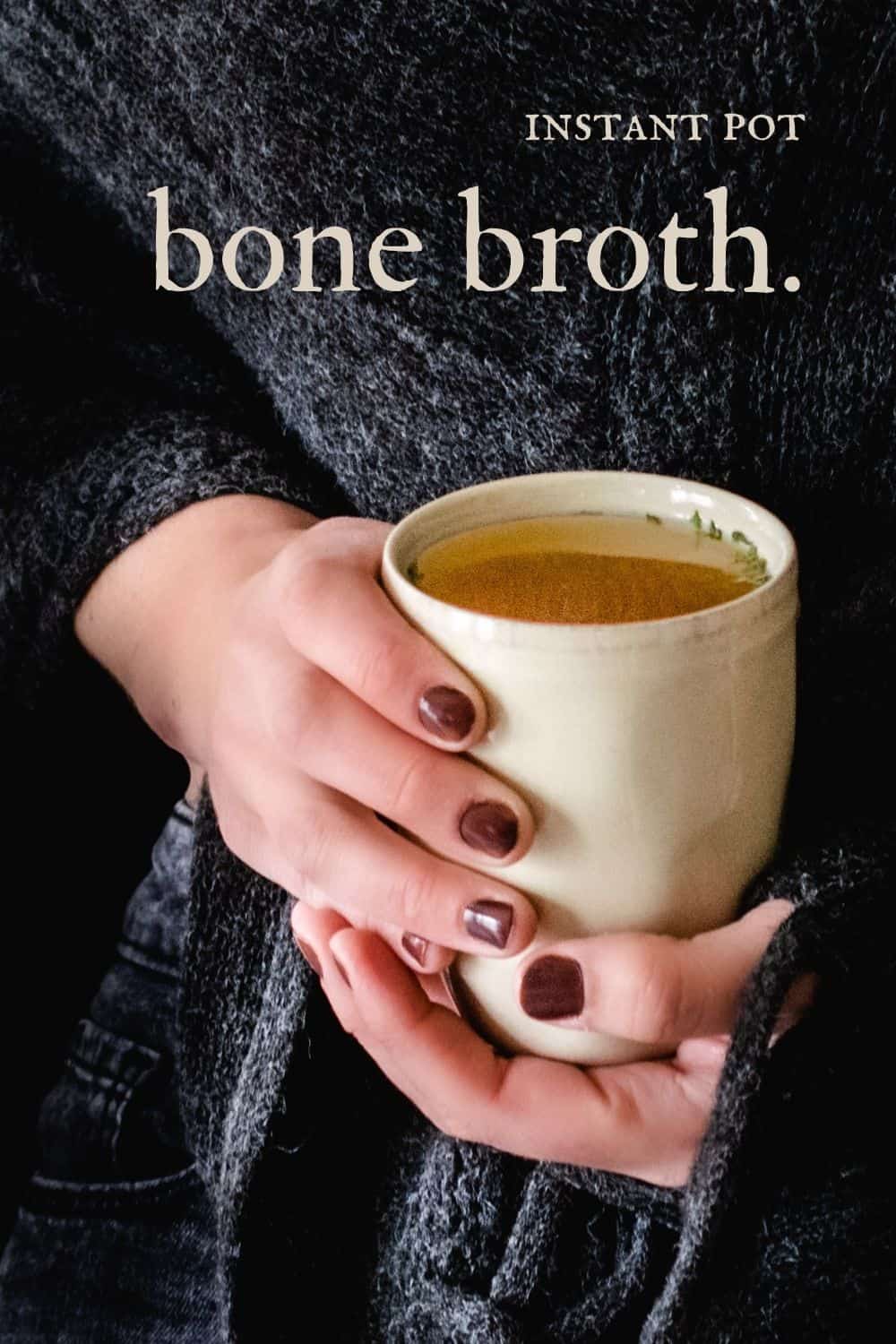
How to make Instant Pot bone broth (or pressure cooker bone broth), plus how to store it in the freezer, refrigerator, or pantry.

I've always made my bone broth and stock on the stove top, but once I discovered the electric pressure cooker (i.e. Instant Pot), everything changed. Now I make more of it. The reason being, is that the stove top method takes all day long. At least 12 hours. In the Instant Pot? You're looking at 2-3 hours max.
Are bone broth and chicken broth the same?
First things first.
Chicken broth and chicken bone broth are not the same. (This is true for any meat variety in, not just chicken.)
Broth is made from the meat portion, usually from boiling it, or simmering it in a liquid, and the resulting flavored liquid is the broth.
Bone broth on the other hand, is actually just a long-cooked stock . Many trained chefs and experienced home cooks argue that stock and bone broth are the exact same thing. From this, we can extract that bone broth is at the most, just a longer cooked stock.
The process of making "bone broth" and stock are the same.
But the term itself sprung up due to the health food fad diets in the past few years, so now we are seeing new "bone broth" products and "bone broth bars".
Either way, the stock/bone broth is very good for you. The resulting gelatinous content will tell you how good of quality stock/bone broth you have.
Bone broth is gelatinous
A stock or bone broth that has a consistency like jelly has a higher collagen content. That's what makes it turn to gel. It's not fat! Whatever you do, do not throw that out! You want that. You won't know if it's gel-like until it has cooled off.
A stock/bone broth that sets and remains looking like broth or a somewhat liquid-like consistency, lacks a good deal of collagen and micro-nutrients which make consuming "bone broth" as a health benefit so appealing to people these days.
The resulting quality is determined by the bones themselves, and how long you've cooked them. I like to refer to this article, on the gelatinous properties of bone broth, from Nourished Kitchen.
** Bone broth will not become gelatinous until it has completely cooled, so you may not be able to see this until the next day.
How to make it
Broth and stock can be a pricey item at the store, so if I can make it myself, you better believe I will. Plus, the quality of homemade stock is generally superior.
It takes anywhere from a day to two days to make good stock on the stove top, but thanks to the Instant Pot, and electric pressure cookers of all kinds, this process can be whittled down to just a few hours.
The bones
No matter what bones you use to make it, the process is the same.
You can use already roasted bones, like from a whole chicken that you roasted in the oven, or you can use raw bones.
You can also use frozen bones, no need to defrost. It may just add a little time to the cooking time, but not much.
You can load the pressure cooker with as many bones as will fit within the cooker's maximum fill line.
Add ins are optional
Add ins, are optional and can be for the purpose of adding flavor, or just to eliminate waste that would otherwise go unused. Or both!
Some examples of what you could toss in are:
- Onion scraps, ends and peels
- Carrot scraps and ends
- Celery leaves and scraps
- Leftover herbs, whole peppercorns, or garlic peels
- Salt is optional: I never salt my stock, as I like to have control of that when I cook with it later. If you are planning on drinking your bone broth for health benefits, and not cooking with it, then go ahead and add some salt to taste.
- Apple cider vinegar, or white vinegar: it is said that adding an acid like vinegar helps to extract the nutrients and marrow from the bones, but I rarely do this and still end up with a very Jello-like result
- Bay leaves
The photo on the left ( photo 1 ) is stock being made from a whole chicken carcass, that was left from our roast chicken dinner. I added extra vegetable peels and scraps for more flavor. It's also nice to be able to use scraps up! Everything gets strained out in the end, leaving a clear, clean chicken stock.
The photo on the right ( photo 2 ) is showing raw beef bones, that the butcher has already cut the meat off of. The bones were otherwise unusable.
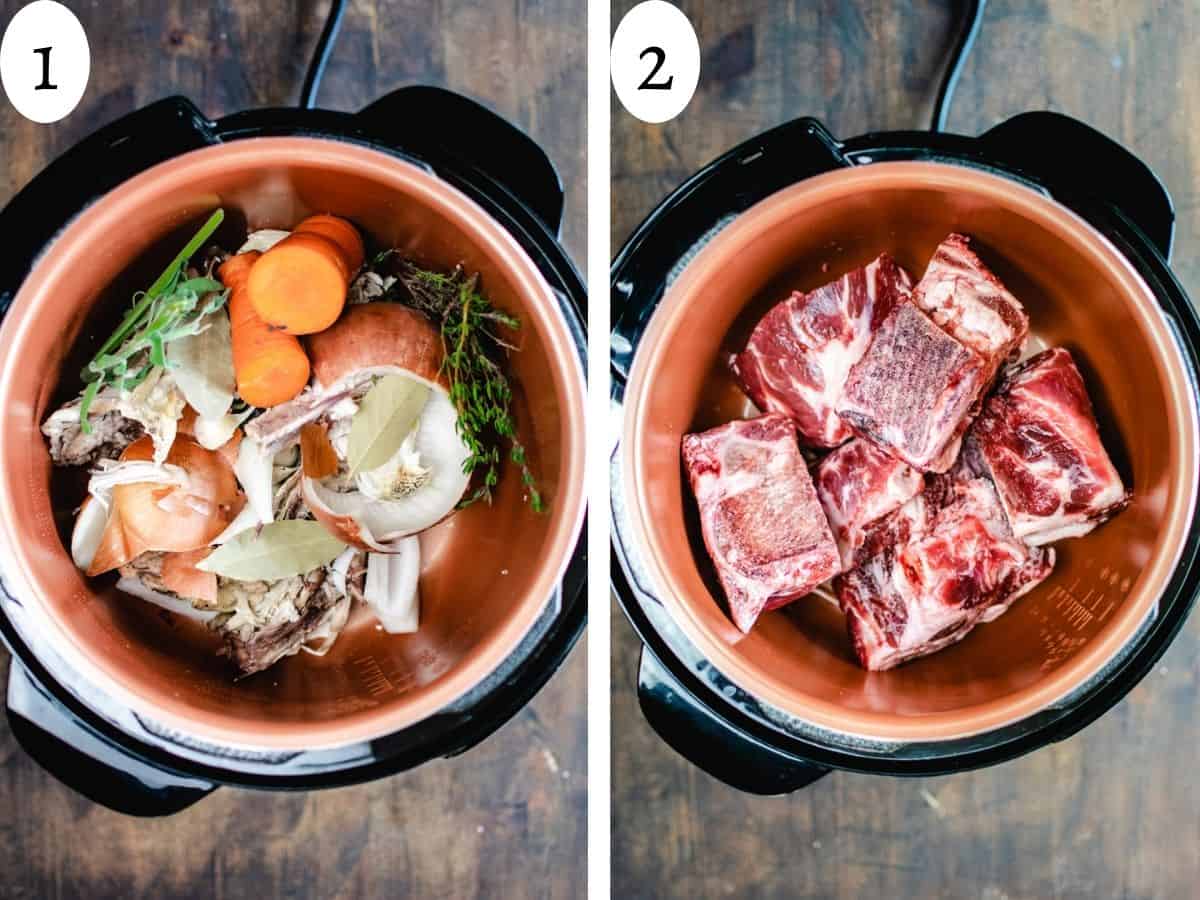
Any variety of bones can be used for making bone broth (stock), and you can choose to add vegetable ends and herbs, or not.
If you choose to add extra vegetables or herbs (add ins) for flavoring, put those on top. This is a great way to get rid of extra scraps from the fridge, and there's no need to trim them.
The water
I prefer not to measure the water; I eyeball it.
After the bones, and any optional add-ins are in the pot, fill the pot with water. Don't exceed the max fill line. A good rule of thumb is to aim for the water to be level with the bones.
Keep in mind that the more water you use, the more thinned out your stock will be. Conversely, using say, half that amount will result in a denser, richer stock.
**For a stronger bone broth, use one gallon (4 quarts) of water. For a lighter broth, use 1 ½ gallons (6 quarts).
To give an idea for what that looks like, if I'm using the carcass of a 5 pound chicken I've roasted, I use a maximum of one gallon (4 quarts) of water. If I want a stronger bone broth, I'll use roughly 3 quarts.
How long to pressure cook
The minimum recommended time for pressure cooking bone broth is 2 hours, however 3 hours will yield a richer, more colored bone broth. This does not include the time for the pot to come to pressure. Add 30 minutes if you are using frozen bones.
This is at high pressure.
If your pot has a maximum pressure cooking time of 2 hours or less, it's fine to do another cycle afterwards.
Let the pot release pressure naturally before opening. The stock will be very hot, don't attempt to strain it before it cools significantly.
Straining the bone broth
After the bone broth has cooled slightly, remove the bones and large pieces with tongs and discard them.
**Tip: You can save the beef bones to give to your pets, just avoid giving any animal chicken bones.
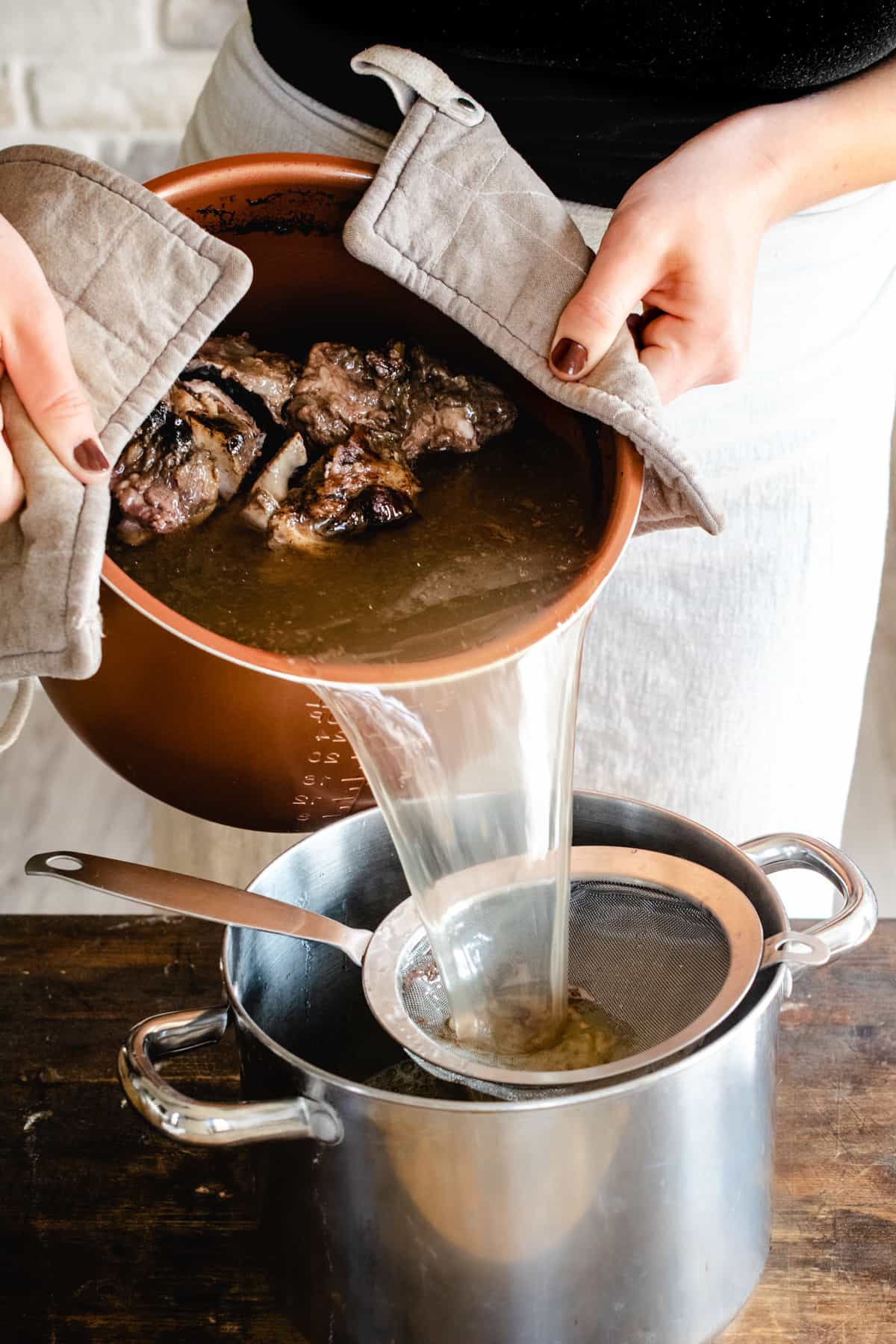
With the large pieces removed, strain the liquid through a fine mesh strainer into a large bowl or container to remove extra pieces and debris. You should have a clear, yet golden or amber colored broth.
Although the bone broth looks clear, it may still contain fat. It is fine to keep the fat, but to remove it is very easy. This can can be done before the storing process, or after when you actually go to use a portion of it.
Removing the fat
Removing the skin from you chicken carcass, for example, will eliminate a lot of unwanted fat from the beginning. However, you may still end up with some unwanted fat content that you may want to remove.

Before storing
An easy way to do this, is to let the strained bone broth set in the fridge. The fat will separate and rise to the top and form a "cap" that can then be easily removed with a spoon.
If you choose to remove the fat before storing, strain the stock into one large container to let the fat separate and harden. Divide the bone broth into portions for storing after the fat is removed .
*It's possible that your stock doesn't contain a significant amount of fat, so you may not even need to any. Also, a little fat is okay, and it makes for amazing gravy, like this Easy, 5-minute Gravy from Crazy For Crust.
After storing
If you want to remove the fat as you use the portions of stored bone broth, you can do so at any time.
You can do this with bone broth that has been moved from the freezer to the fridge to thaw. Frozen bone broth should be thawed safely in the fridge or defrosted in the microwave. As the stock thaws the fat will still remain solid and can be removed from the top of the liquid.
Pressure canned jars and containers (not to be done in the pressure cooker itself, click here for details on why) that are stored in the pantry may not have the same solid fat cap. Instead, they may have a liquid layer of fat at the top that can be seen if the jar has not been shaken. It can be spooned or skimmed off at room temperature for adequate fat removal.
Storing homemade bone broth
There are several ways to store bone broth, and how you do so will depend on your circumstances, and what your plans are for the stock. Let's go over a few easy methods.
Fridge
You can store it safely in the fridge for 3-4 days according to the USDA website. Use an airtight container such as lidded deli containers, or mason jars with reusable plastic lids.
Let the stock cool down to a warm temperature before pouring into the containers.
You can remove the "fat caps" (if any) after the stock sets and the fat rises to the top, and hardens.
Freezer
Storing your homemade bone broth in the freezer is a great long term solution. According to the FDA, you can do this safely for up to about 6 months.
An easy, space saving way to do this is using stackable zip lock freezer bags.
Using jars or plastic containers helps to sturdy the plastic bags for pouring. Line the containers and fold the tops over the rim. This helps to hold the shape while pouring. Be sure to leave a couple of inches of head space to allow room for expansion and to zip up the bag.
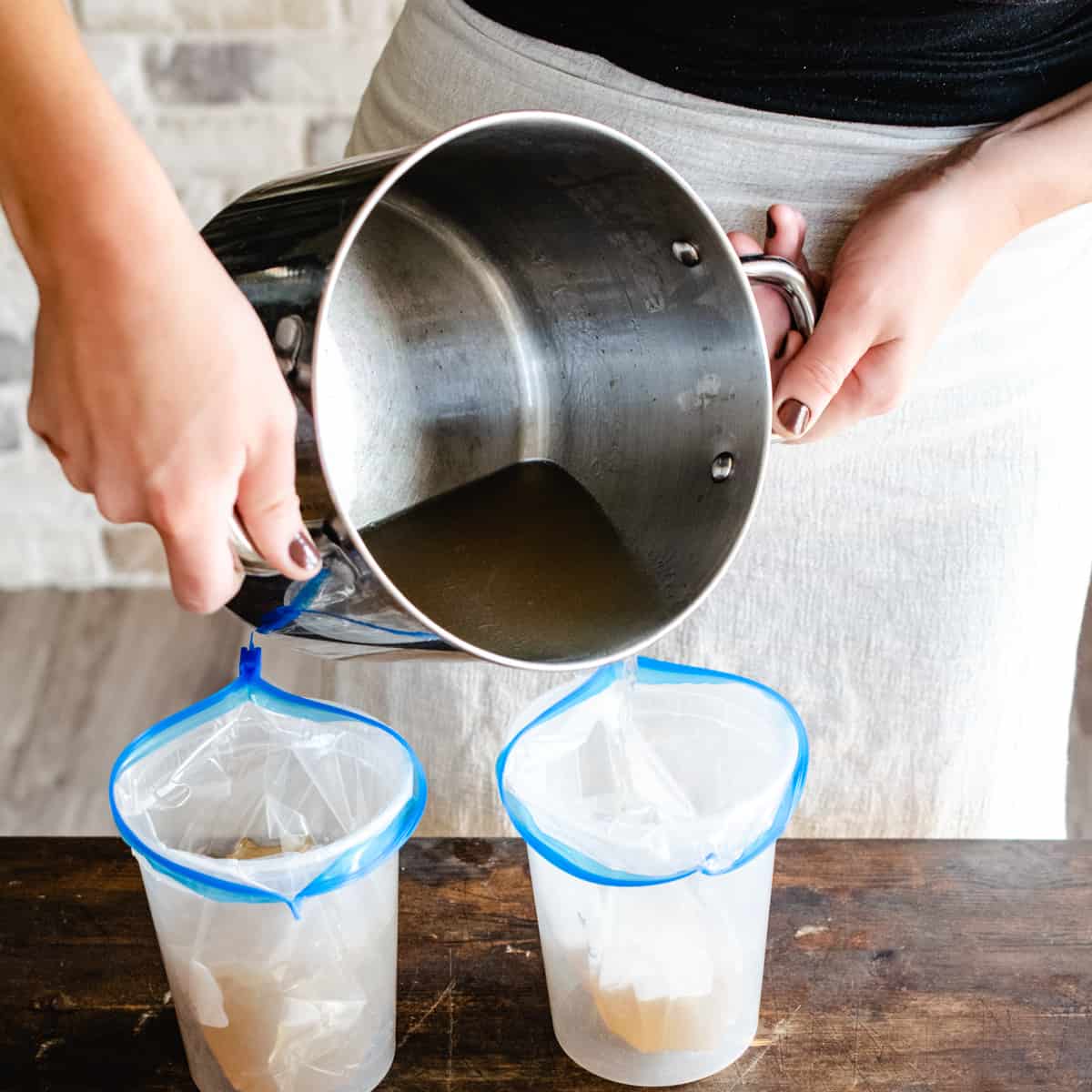
Once the bags are full, seal them and lie them flat on a baking sheet. Freeze them this way until solid, then remove the baking sheet and stack the flat, frozen bags any way you wish in the freezer.
Pantry
The only way to safely store homemade bone broth at room temperature is by pressure canning it.
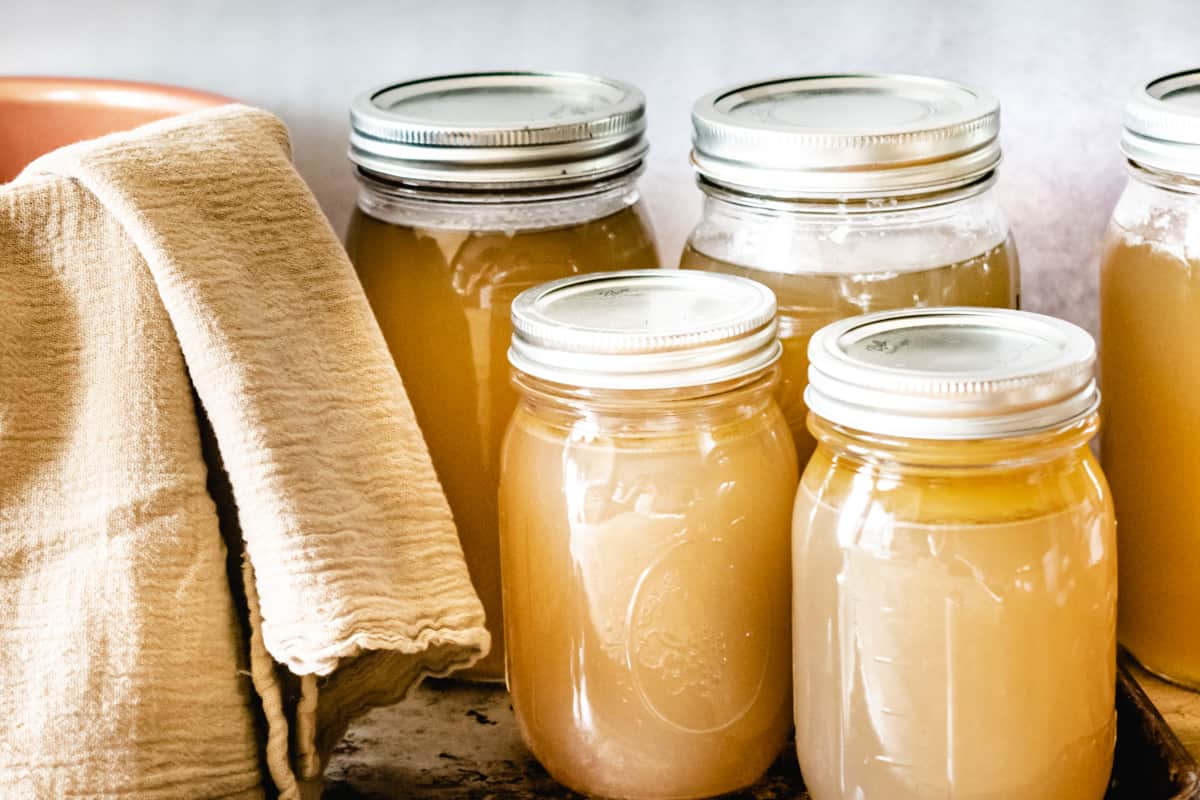
You cannot use your electric pressure cooker to pressure can broth or stock!This is generally not safe, and it's not approved by most pressure cooker manuals, other than the Instant Pot Max.
Without the Instant Pot Max specifically, a dedicated pressure canner (I have this one). It has a huge capacity and is capable of canning an entire Instant Pot worth of homemade bone broth in several pint size jars.
The benefit of pressure canning the bone broth, is that it may be stored in a cool pantry for at least 18 months!
Here is another link for more in-depth details on pressure canning your homemade Instant Pot bone broth.
Using bone broth
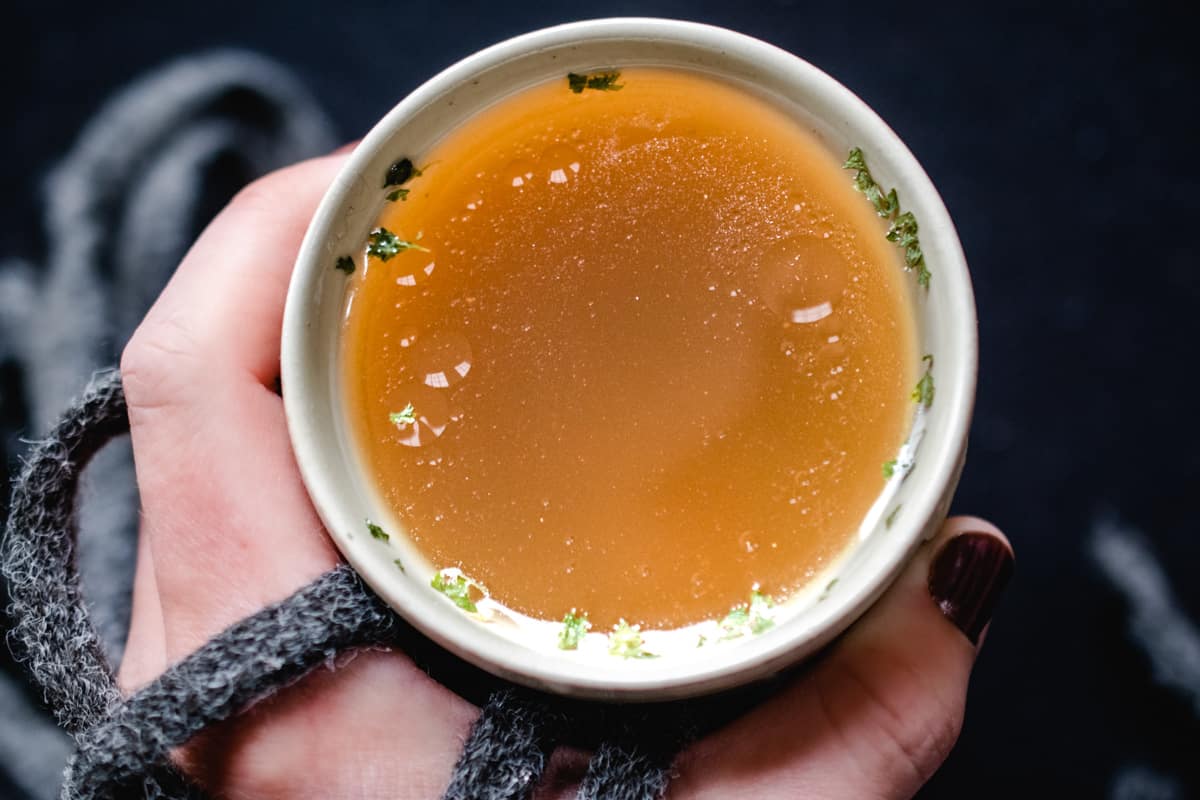
Drinking bone broth in a cozy mug is a great way to go about your day. It's simple, and delicious, and just makes you feel good.
However, you may want to dress it up once in awhile, especially if you plan to drink it often.
Here are some ideas to take your bone broth to add some pizazz to your bone broth:
- Make beef bone broth light and bright: add a squeeze of fresh lime, splash of coconut milk and pinch of coriander.
- Stir in a teaspoon of tomato paste and splash of cream into chicken bone broth for a tomato bisque-like experience.
- Toss in a pod or two of dried chili peppers to any bone broth to spice things up.
- Like egg drop soup? Whisk a beaten egg, minced mushrooms and minced water chestnuts into hot chicken bone broth. (The beaten egg will cook as it whisks into the hot broth.)
- Add minced garlic, freshly chopped herbs and a squeeze of fresh lemon to chicken bone broth.
- Give cold and flu season a one-two punch, and add fresh grated ginger, turmeric, and black pepper.
Besides drinking your bone broth hot in a mug for it's amazing health benefits, you can use it as a substitute for regular broth or stock in a nearly infinite amount of broth based soups.
Here's a few of my favorites for this time of year:
- Feel Better Chicken Soup from Feasting at Home
- Italian Wedding Soup (can be made stove top, slow cooker, or Instant Pot!) from The Cozy Cook
- The Recipe Rebel's Sausage Tortellini Soup
- Classic Vegetable Beef Soup from The Recipe Critic
- Simple Homemade Chicken Ramen from Fork Knife Swoon
These are just a few of my favorites, but the possibilities are endless. You can rest assured that however you take your bone broth, you're body and health will thank you.
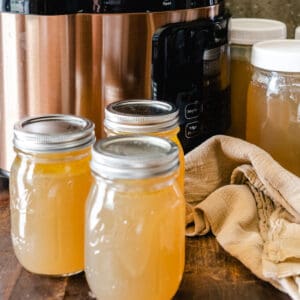
-
Pressure cooker
- 16-24 cups water ( 1-1.5 gallons)
- 4 lbs chicken or beef bones and parts fresh, frozen, or cooked
- vegetable scraps and ends optional
- salt and pepper optional
- bay leaves optional
-
Place the bones or chicken carcass in the pressure cooker.
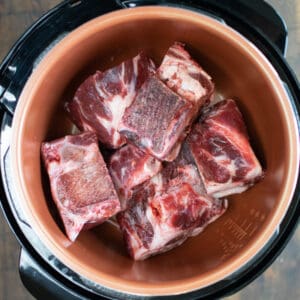
-
Top with add ins, if you have chosen to use them. (Vegetable scraps and ends like onion, garlic, carrots, or even fresh or dried herbs; optional.)
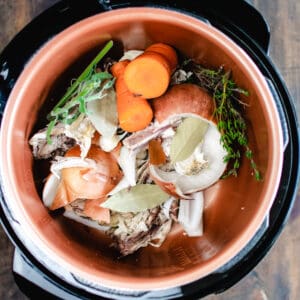
-
Cover the bones with water. Use 16-24 cups (1-1 ½ gallons) depending on desired strength of bone broth. That's 16 cups (1 gallon) for stronger bone broth, or 24 cups (1 ½ gallons) for lighter bone broth.
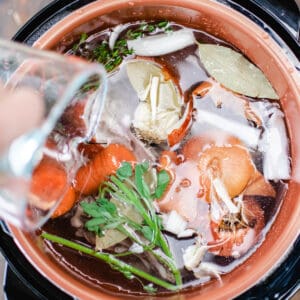
-
Seal the electric pressure cooker as directed and set on manual setting to high pressure for 2-3 hours time. 2 hours for lighter broth, 3 hours for stronger. Don't go over 3 hours, as that can be too long.
-
Allow the pressure cooker to release steam naturally, carefully remove lid away from face and let cool.
-
Pour the cooled broth through a fine mesh screen to strain out pieces. (Use either one large pot to divide the bone broth up later, or pour directly into storage jars.)
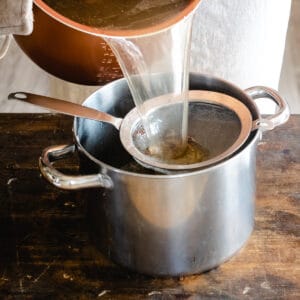
-
Chill the strained stock in the fridge to allow fat to solidify and separate, then skim it off the top to remove from stock.
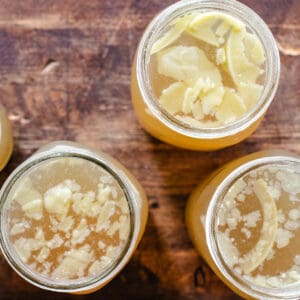
-
Store in plastic bags in the freezer, or in the fridge in air tight containers.
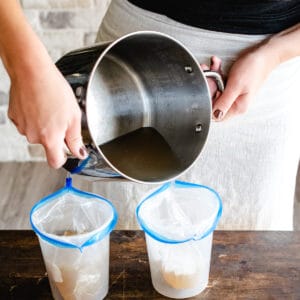
- Store finished bone broth in the freezer for up to 6 months, or in the fridge for up to 4 days.
- Don't use pressure cooker to can stock; use a dedicated pressure canner.
- Additional herbs, seasonings and vegetable scraps are totally optional and just for flavor.
- Bones may be previously roasted (like from a rotisserie or roasted chicken), or raw, and even frozen.
Serving: 1 g | Calories: 54 kcal | Carbohydrates: 3 g | Protein: 9 g | Fat: 1 g | Saturated Fat: 1 g | Sodium: 114 mg | Potassium: 203 mg | Sugar: 1 g | Calcium: 9 mg | Iron: 1 mg
Source: https://thefrozenbiscuit.com/bone-broth/
Post a Comment for "How to Use Frozen Beef Bone Broth"